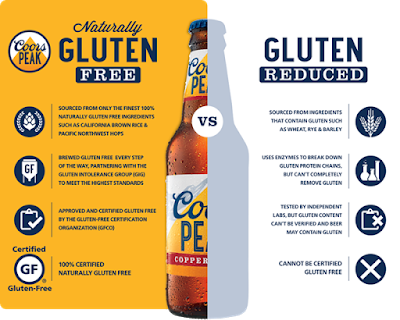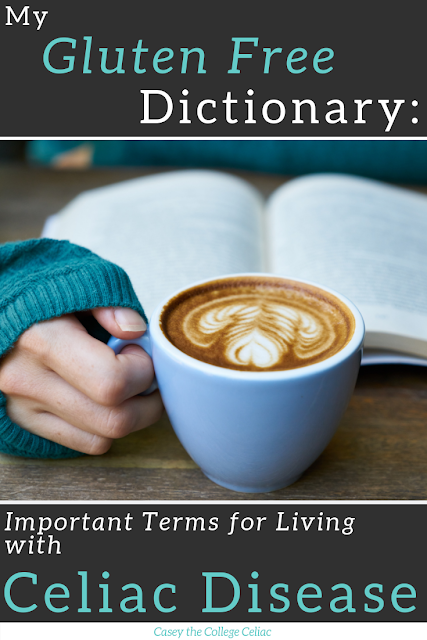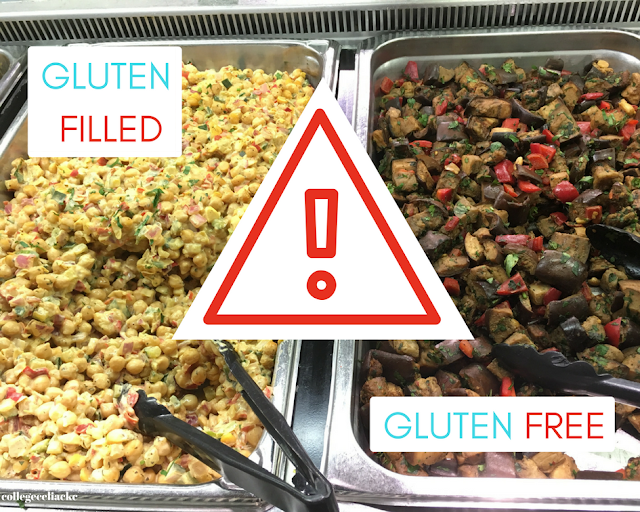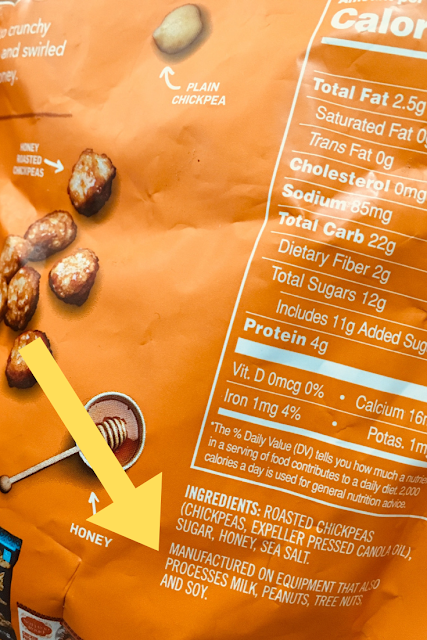My Gluten Free Dictionary: Important Terms For Living with Celiac Disease
New blog post! When you first learn you have celiac disease, it can feel like you’ve been transported to a whole new world. Not only do you have to start a gluten free diet…but you’re also surrounded by a ton of new terms, like “gluten” or “purity protocol oats.” That’s why I thought I’d round up some of the gluten free vocab words I’ve learned in the five years since my celiac disease diagnosis. (Keyword: “some.” While I tried to round up a good amount of important terms in this list, this post is certainly not exhaustive)!
So if you’re new to the gluten free community, welcome! Here’s a cheat sheet of a few important terms. ;) If you’re a celiac veteran, I hope you get a good laugh at some of the funky vocab terms you’ve learned over the years. And if you’re just a loved one or friend of someone with celiac disease, here’s a little bit of insight into our gluten free world!
My Gluten Free Dictionary:
Autoimmune Disease: a chronic condition in which someone’s immune system attacks his or her own body.
Celiac Disease: An autoimmune disease in which ingesting gluten causes intestinal damage.
Certified Gluten Free: A product that has undergone additional testing beyond that required from the FDA. You can read more about the various organizations that certify products and the different kind of gluten free certifications here.
Cross-Contamination: in the context of celiac disease, this refers to the process through which gluten-containing food comes into contain with gluten-free-food. Eating cross-contaminated gluten free food can cause some not-so-fun symptoms in people with celiac disease.
Dermatitis Herpetiformis: an extremely itchy, blistery rash that develops from ingesting gluten. DH is seen in around 10-15% of people with celiac disease and is treated, in part, by a strict gluten free diet.
Endoscopy: a medical procedure in which a flexible tube with a light and camera attached is inserted down a patient’s throat so that a doctor can examine the digestive tract. To confirm a celiac disease diagnosis, doctors also use an endoscopy to take biopsies of the small intestine.
Gastroenterologist: a doctor who specializes in diagnosing and treating diseases related to the digestive tract.
Gluten: a protein found in grains like wheat, barley and rye.
“Gluten Allergy”: A term that people often use to explain not being able to eat gluten, when they actually are usually referring to having celiac disease, non celiac gluten sensitivity or a wheat allergy. The term “gluten allergy” isn’t an actually medically recognized term.
Glutened: the result of ingesting gluten, which can cause symptoms like diarrhea, acid reflux, bloating, stomach pain, brain fog, etc.
“Gluten-lite”: a term sometimes seen in restaurant menus that offer meals that are gluten free but not guaranteed to be free of cross-contamination (and therefore not celiac safe), or just “low” in gluten.
Gluten-Free: technically, food without gluten, but according to the FDA, this refers to food that has less than 20 ppm (parts per million) of gluten. You can find out more about FDA labeling practices and the thought process behind the 20 ppm mark here.
“Gluten Friendly”: another term often used by restaurants to refer to meals that are technically “free” of gluten but not prepared with cross contamination in mind and not typically safe for people with celiac disease.
Gluten Intolerance: there are a lot of different definitions out there, and some even argue that there is no such thing as gluten intolerance in the first place (as I discuss here). However, one way to define gluten intolerance is experiencing negative side effects from eating gluten (such as bloating, stomach pain, etc) despite not having celiac disease.
Gluten-Removed/Reduced Beer: beer that is made using wheat, barley or rye. Then, enzymes are used to hypothetically “break down” the gluten. However, studies have found that GR beer is not safe for those with celiac disease, possibly because parts of the gluten protein may still remain in the beer.
 |
| Source |
Intestinal Biopsy: the gold standard procedure for an official celiac disease diagnosis. During it, a doctor will take tissue samples of a patient’s small intestines, which will then be examined under a microscope for signs of celiac disease.
Intestinal Villi: small, finger-like cells that line the small intestine and help the body absorb nutrients and minerals from food. In people with celiac disease, these villi are damaged from gluten ingestion, which prevents them from receiving proper nutrients, no matter how much they eat.
Invisible Illness: any medical condition that is not physically visible to other people.
Manufacturing Advisory Statement: the voluntary statements included on products that indicate if an allergen is present in the manufacturing facility. This statement is not legally required and does not mean the product contains that allergen, just like a product without this statement doesn’t mean the product was made in an allergen-free facility.
(Like I’ve talked about before, it’s really up to every single person with celiac disease to decide what they are comfortable eating. Some celiacs eat foods that are not labeled gluten free but don’t have any gluten-containing ingredients; others only eat certified gluten free food. It’s up to you - just make sure you’re making an educated decision!)
Naturally Gluten Free: a food that naturally does not contain gluten and may or may not be labled “gluten free” (though it could be as long as it meets the FDA’s requirements of containing less than 20 ppm of gluten). Some examples of this could be fruit, vegetables or bottled water.
Non-Celiac Gluten/Wheat Sensitivity: The preferred term to describe the phenomena historically referred to as gluten intolerance. Scientists are still doing more research on the causes and prevalence of NCGS, as well as how to officially diagnose someone with it.
Purity Protocol Oats: Oats are naturally gluten free, but it is very easy for them to be cross-contaminated. As a result, more and more people with celiac disease are turning to purity protocol oats. As Erica from Celiac and the Beast explains them: “Purity protocol oats are grown in dedicated gluten-free fields away from grains, can use gluten-free trucks to ship the oats, and can use a dedicated gluten-free facility to package."
Top 8 Free: a food or product free of the topic eight allergens (milk, eggs, fish, shellfish, tree nuts, peanuts, wheat, and soy).
Wheat Allergy: an allergic response to the ingestion of wheat, though people with a true wheat allergy can usually still eat barley and rye (unlike those with celiac disease). The ingestion of wheat causes antibodies to be produced, which triggers symptoms like hives, the swelling or itching of the mouth or throat, diarrhea, or even anaphylaxis.
The Biggest Thing I Hope People Know About What It’s Like Living with Celiac Disease
If this short list teaches you anything, I hope it’s that living with celiac disease is much more complicated and involved than just swapping whole wheat bread for a gluten free version. A celiac disease diagnosis really does change people’s lives in a lot of different ways…including their need to learn some new vocabulary words!
Is there a vocab word I didn’t include in this list that caught you by surprise? I’d love to hear about it in the comments!
via Blogger https://ift.tt/2ZNVesQ
from Random Scribbles https://ift.tt/2X1tFdx
via IFTTT






Comments
Post a Comment